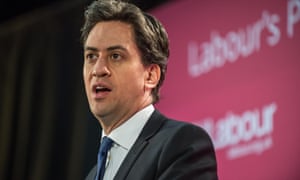Not many had foreseen such an abrupt end to Michael Flynn’s role in the Donald Trump presidency. Mr. Flynn, who was Mr. Trump’s National Security Adviser for 24 days, the shortest stint for anybody since the post was created over 60 years ago, was seen as a key architect of the new administration’s foreign and security policies. He was one of the first military figures to endorse Mr. Trump and had been closely associated with him through his rise to the White House.
Still he was forced to leave amid a growing scandal over his contacts with Sergey Kislyak, the Russian Ambassador in Washington. While the sudden resignation may be surprising, for those who closely watch the events that led to Mr. Flynn’s downfall, it’s not difficult to see an underlying pattern in them, which points to a growing tussle between the Trump team and U.S. intelligence agencies. The U.S. deep state, a web of military (intelligence), political and other interests operating behind the scene to ensure the status quo prevails, may not be as visible to the public as in dictatorships. That’s mainly because its interests have always been taken care of by the political leadership. However Mr. Trump’s attack on the establishment and his seemingly friendly approach towards Russia, the arch enemy of the U.S. in Washington parlance, clearly upset the deep state.
The Russia factor
So the tussle between Mr. Trump and intelligence agencies dates back to the billionaire property mogul’s surprising election victory on November 8, 2016. Within a month, the American media carried reports that the Central Intelligence Agency (CIA) had concluded that Russia had interfered in the U.S. election to help Mr. Trump become President. The finding was that Russian hackers attacked Democratic campaign servers, stole emails and gave them to WikiLeaks, which released them to the public apparently hurting Hillary Clinton’s chances in the election. Barack Obama, by then a lame-duck President, quickly acted on the intelligence reports, imposing fresh sanctions on Russia and expelling 35 Russian diplomats. Clearly, it made any reset in ties difficult for his successor.
Another report that came a month later, again leaked by intelligence officials, claimed that Russia had “compromising personal and financial” information about Mr. Trump.
There were even allegations in Washington by influential people such as Strobe Talbott, a former Deputy Secretary of State, and Michael Morell, a former acting CIA director, that Mr. Trump is a “Kremlin stooge” and a “Putin recruit”. The leaks did not stop after Mr. Trump assumed office or his nominees took over the Pentagon and intelligence agencies. Mr. Flynn’s fall is a case in point. To bring him down, intelligence officials have leaked the contents of intercepted communication, something which is seen as one of the most serious felonies among crimes involving leaking classified information. Mr. Flynn talked to the Russian Ambassador multiple times on the phone on December 29, the day Mr. Obama imposed fresh sanctions on Russia and sacked the diplomats. He first denied having spoken of sanctions. So did the White House. But the Ambassador had been wiretapped and the intelligence community had the details of what was discussed. Once the media got hold of these details, the White House had no option but to give up on Mr. Flynn.
What connects all these exposés and allegations is the Russia factor. Mr. Trump had sought better cooperation with Moscow in the war against the Islamic State. He had also challenged certain accepted notions among the Washington establishment such as the role and relevance of the North Atlantic Treaty Organisation (NATO). This was unacceptable for the deep state, for which the presidency is temporary and the system permanent. The first major leak by the CIA on the Russian involvement in the cyberattack on Democratic campaign servers was a declaration of war. This doesn’t mean that the leaks are bad. Any attempt to make information public, irrespective of its cause and effect, is welcome. But in this case, information is being used as a weapon in a battle between powerful groups. It’s also to be noted that the establishment doesn’t have a problem with Mr. Trump’s more dangerous (for both the U.S. and the world) and provocative policy measures. The Republican leadership, including Paul Ryan, defended his Muslim ban. His belligerence on West Asia is unlikely to invite significant opposition. The opposition comes only over the red line, and that’s Russia.
Mr. Trump could either fight back or make peace. Two days after Mr. Flynn’s resignation, he has signalled both. He attacked the intelligence agencies on Twitter on Wednesday, while the White House indicated that the promised détente with Russia was over. But Mr. Flynn has set in motion a process that is unlikely to be controlled by a seemingly incompetent administration like Mr. Trump’s. With chaos engulfing his government, Mr. Trump will be forced to conform.



